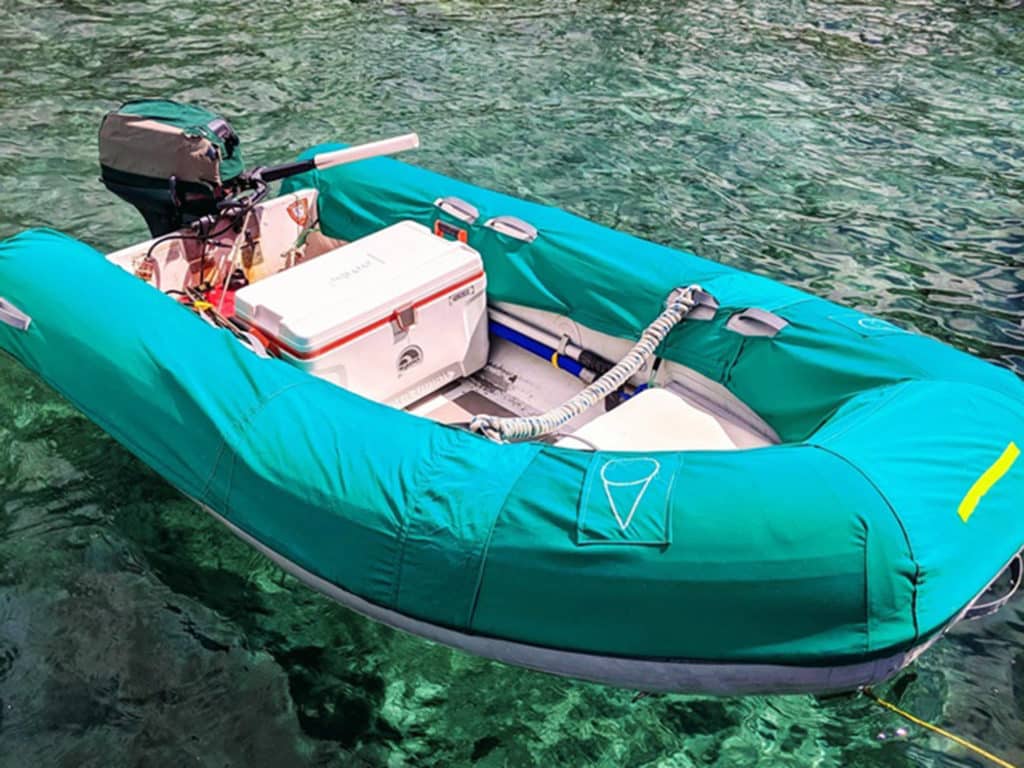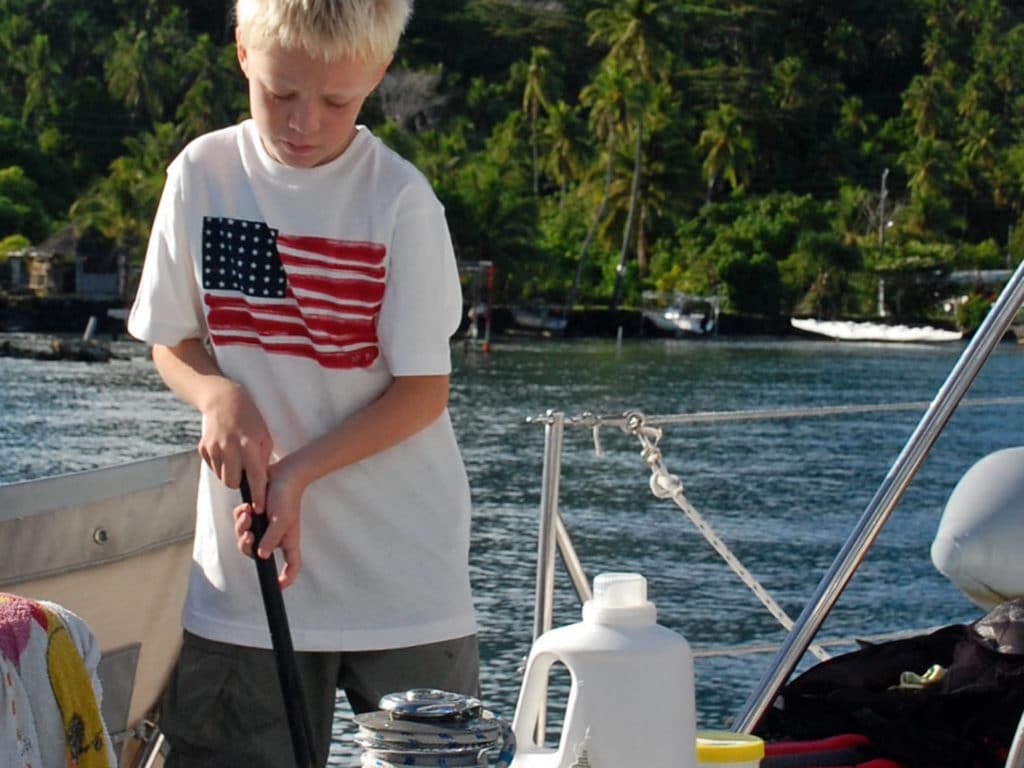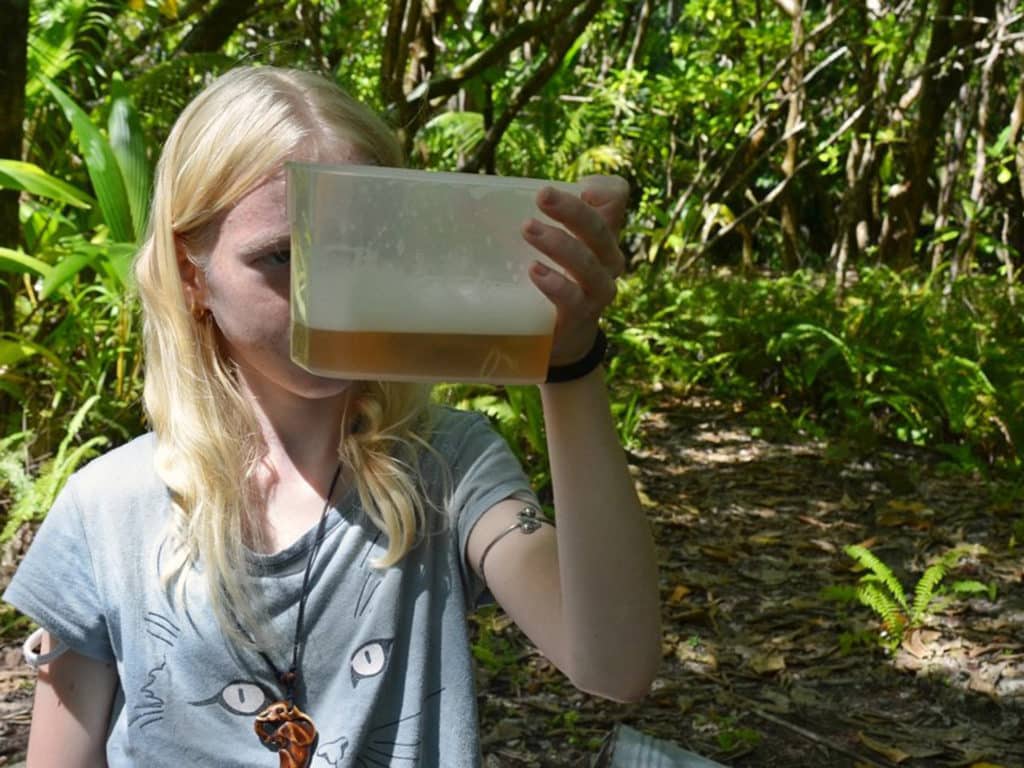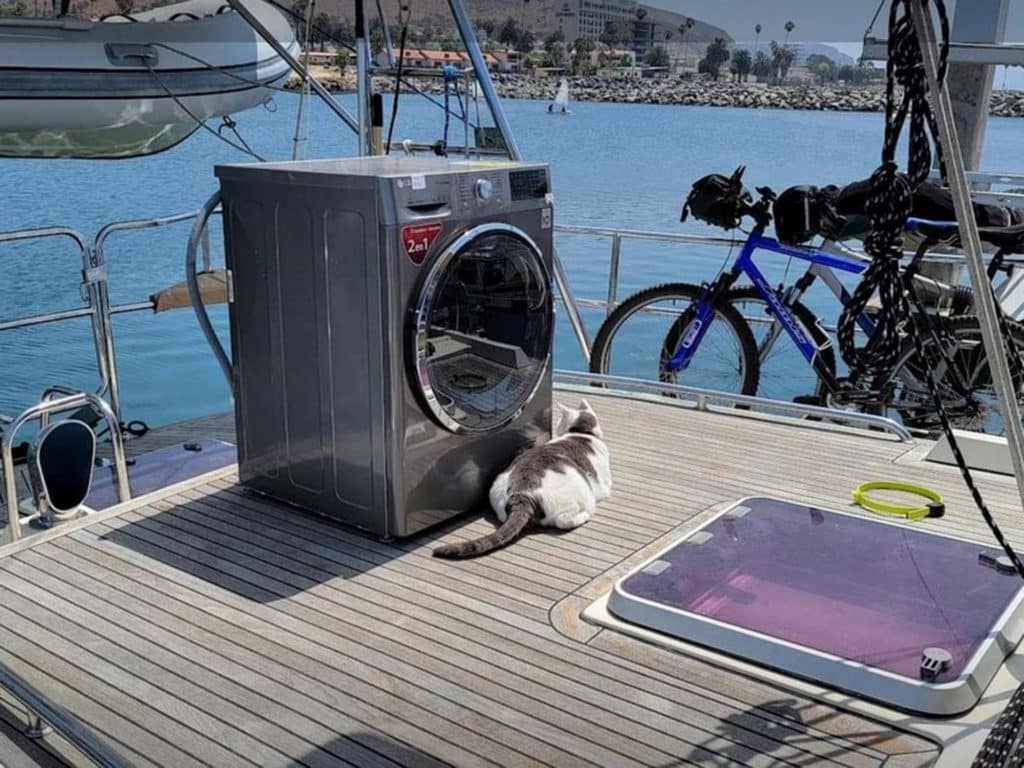
Legions of cruisers have traversed the big blue without a washing machine on board. At first, it might seem like an intimidating change from life on land. I thought it would be hard to live without an extra freezer in the garage, but we make the adjustments and surprise ourselves about what we don’t miss.
For boats that don’t have the water-making capacity, power supply or space for a washing machine on board (see Washing Machine on Board?), onboard laundry supplemented with laundry services and laundromats is a fine way to keep clothes clean.
Here’s a roundup of tips for washing on board, along with suggestions for keeping your detergent ocean-friendly.
The 5-Gallon Bucket Washer
We used a bucket (or a series of them) for the first 11 years of cruising. It was an adjustment from land life, but not a big deal; it suited our new life, where everyday tasks didn’t need to be completed as efficiently as they did in our previous hamster-wheel existence. Your “washing machine” could be a sink or a cooler.
We learned that using salt water doesn’t conserve fresh water in the end. You’ll ultimately use as much water to get it all rinsed out as if you’d stuck to fresh.
Stomping in the bucket, or agitating the clothes manually every few minutes, or mostly ignoring the clothes (while getting a good soak in) are all perfectly adequate methods.
You can put more clothes in a bucket than you’d guess, and you need less detergent than you think. It’s a good idea to boil a kettle once in a while for hotter water.
One load takes three fills of a bucket: first to suds up and agitate, second to get a glug of vinegar to rinse out the soap, and third for the final rinse.
Gaze at your neighbor’s wringer with envy, and then ask your crewmember with the strongest hands to do the wringing. Be glad you aren’t stowing that contraption on board.
And, use shoreside laundry any time it is available and not usuriously priced.
Parent Hack

A great way to keep down the volume of laundry is to put the kids in charge. If they have to wash an item, they will think twice about whether it can be worn again before committing it to a laundry basket.
You might think your kids are too young or too small. Trust me, this is not about possessing skills, size or brawn. While they might eventually grow up to offer all of those, this is about motivation. It can make a material difference in the amount of laundry on board. You might need to help a little, but overall quantity of laundry will be reduced.
Clothes that we washed in a bucket never got quite as clean as in a washing machine. I did sometimes miss all the options for water temperatures and soaking. But on the boat, we aren’t about being shiny, unstained or unwrinkled. In our old life, yes, but on board, we focus on being decent and smelling OK.
Be Smart about Detergent
Whether you use a washing machine or a bucket, gray water going overboard can be a marine pollutant. Think hard about what might be in that water and the environment around you.
Purchasing environmentally friendly detergent can be difficult. Unless you are in the land of the privileged, it is either hard or impossible to find. Products that are unscented or suited to sensitive skin are also difficult to source. Stock up before you go, and stock up again when you can find ocean-friendly products.
We found that environmentally friendly, powdered laundry soap takes up the least space and adds the least weight (and packaging) for the most washes. It cannot be in pods or packs, which produce microplastic. Because powdered detergent is subject to humidity, consider transferring opened packages to more impervious containers like this Lock & Lock gasketed-lid tub.
Molly’s Suds is a super concentrated powder with none of the nasties (pinkie swear), and it’s available in a few natural scents. Check the Environmental Working Group’s laundry guide for other brands, although now that I know this group gives top grades to sunscreen with reef-toxic ingredients, I look at its reports a little differently.

Another option is to use soap nuts (aka soap berries). These hypoallergenic little wonders take a teensy bit of extra effort (you need to soften them in warm water), but they do a great job of cleaning, and will last for ages while taking only a very small amount of stowage.
You can also make your own detergent from four or five ingredients. Lots of how-to’s are online, and we know several cruisers who go this path. I’m considering it, along with a restock on soap nuts.
Can you skip the detergent and use a ceramic laundry ball? Maybe. These balls get mixed reviews (which is a nice way of saying they don’t always work well). I love the idea of eliminating the waste, but since warm (and preferably hot) water helps these balls work even marginally well, they aren’t a good fit for regular laundry on most boats.
Avoid strips, sheets, pods or packs. The thin sheets of solid detergent are marketed as eco-friendly, and I wanted to love them, but like pods or packs, they rely on polyvinyl alcohol for their construction. This is just another microplastic. From the National Institutes of Health: “PVA presence in the environment, regardless of its matrix, is a threat to the ecosystem due to the potential mobilization of heavy metals and other hydrophilic contaminants.”
Also avoid ammonia. This substance was lauded by cruisers of old, so it might lurk in a dated how-to guide, but ammonia is damaging to fish gills and can affect coral. We have better, less-toxic options.

We Got a Washer Anyway
We did, and we are really happy with it, but it really isn’t a big deal to do laundry in a bucket. It takes a little time, but it happens on your schedule. This describes just about everything in cruising. Time is what we have, and giving more of it to even mundane tasks opens other opportunities for rumination or exploration. And meanwhile, who knows what adventure awaits as you pick your way to the lavanderia on shore?








